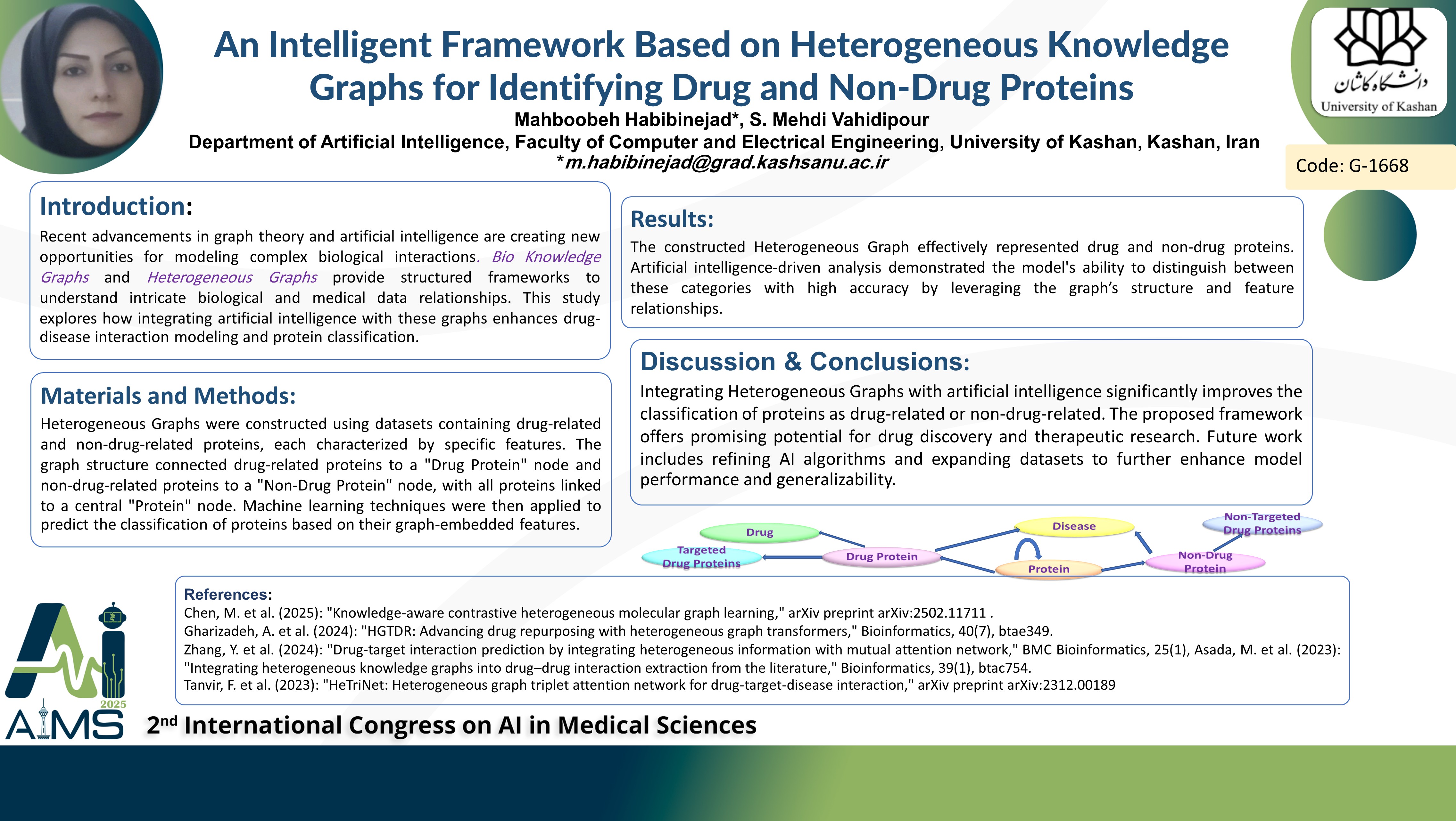An Intelligent Framework Based on Heterogeneous Knowledge Graphs for Identifying Drug and Non-Drug Proteins
Code: G-1668
Authors: Mahboobeh Habibinejad * ℗, S. Mehdi Vahidipour
Schedule: Not Scheduled!
Tag: Drug Discovery
Download: Download Poster
Abstract:
Abstract
Recent advancements in graph theory and artificial intelligence are creating new opportunities for modeling complex biological interactions. By utilizing Bio Knowledge Graphs and Heterogeneous Graphs, this study aims to improve the classification of proteins, particularly in distinguishing between drug-related and non-drug-related proteins. Background and aims: Bio Knowledge Graphs and Heterogeneous Graphs are powerful tools for modeling complex relationships between various biological entities such as drugs, diseases, proteins, and biological pathways. These graphs provide a structured framework to better understand the intricate connections within biological and medical data. The goal of this study is to explore how integrating artificial intelligence with Bio Knowledge Graphs and Heterogeneous Graphs can enhance the modeling of drug-disease interactions and improve the prediction of disease-related protein classifications. Method: In this study, Heterogeneous Graphs will be constructed using a dataset that includes drug-related and non-drug-related proteins, each with associated features. The graph will be structured by connecting drug-related proteins to a "Drug Protein" node and non-drug-related proteins to a "Non-Drug Protein" node, while all proteins will also be linked to a central "Protein" node. Artificial intelligence algorithms, including machine learning techniques, will then be applied to predict whether a protein is drug-related or non-drug-related, based on its features and relationships within the graph. Results: The construction of Heterogeneous Graphs will yield an effective model that represents both drug-related and non-drug-related proteins. Artificial intelligence -driven analysis will demonstrate the ability of the graph to successfully differentiate between these two categories by leveraging the relationships and features embedded within the graph. Conclusion: This study will highlight the potential of integrating Heterogeneous Graphs with artificial intelligence to classify proteins as drug-related or non-drug-related. The proposed model will provide a valuable framework for drug discovery and therapeutic research. Further improvements in artificial intelligence algorithms, coupled with the integration of larger datasets, will enhance the accuracy and applicability of the model.
Keywords
HeterogeneousGraph, Protein, DrugRelated, NonDrugRelated, ArtificialIntelligence, MachineLearning
